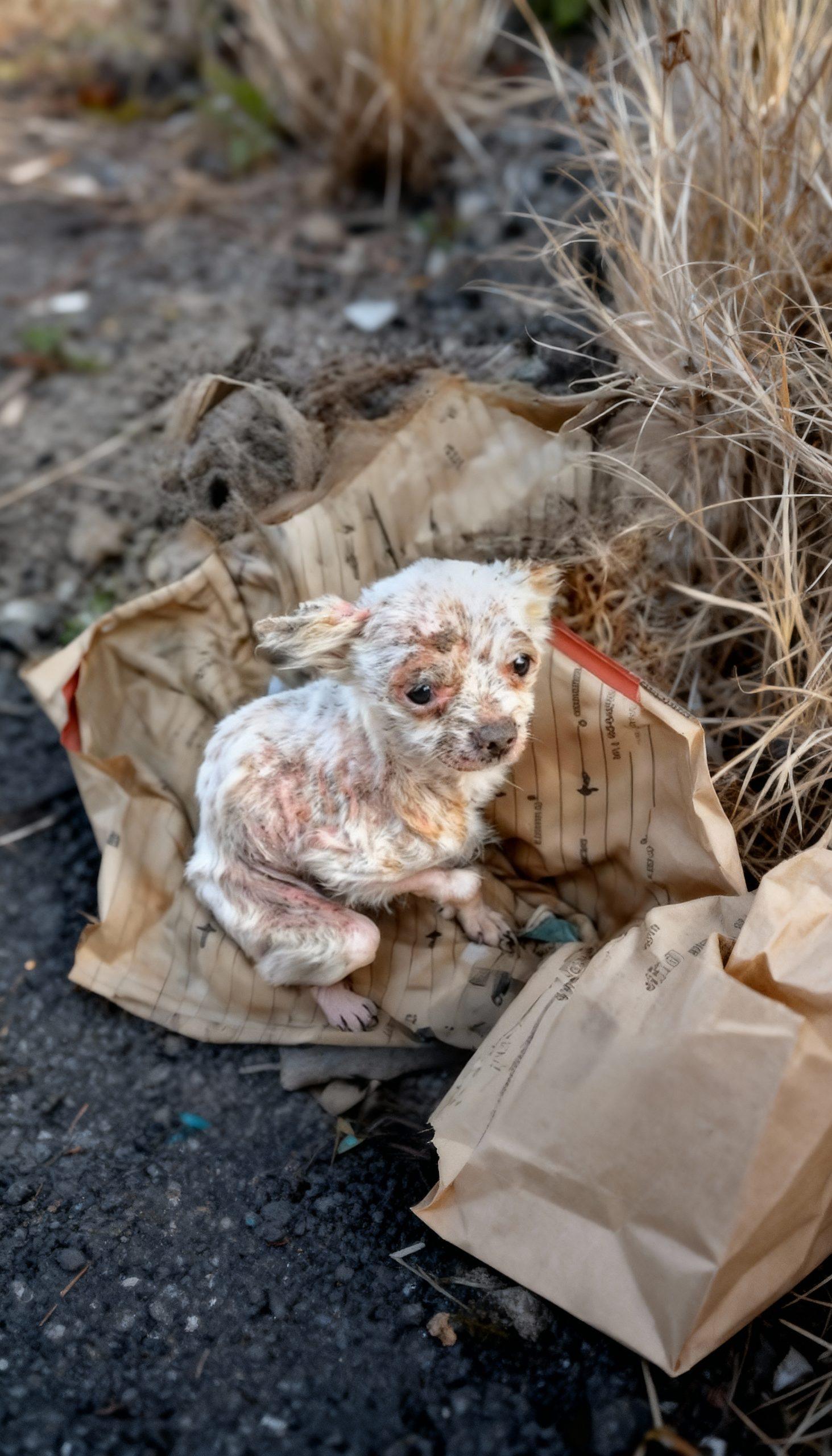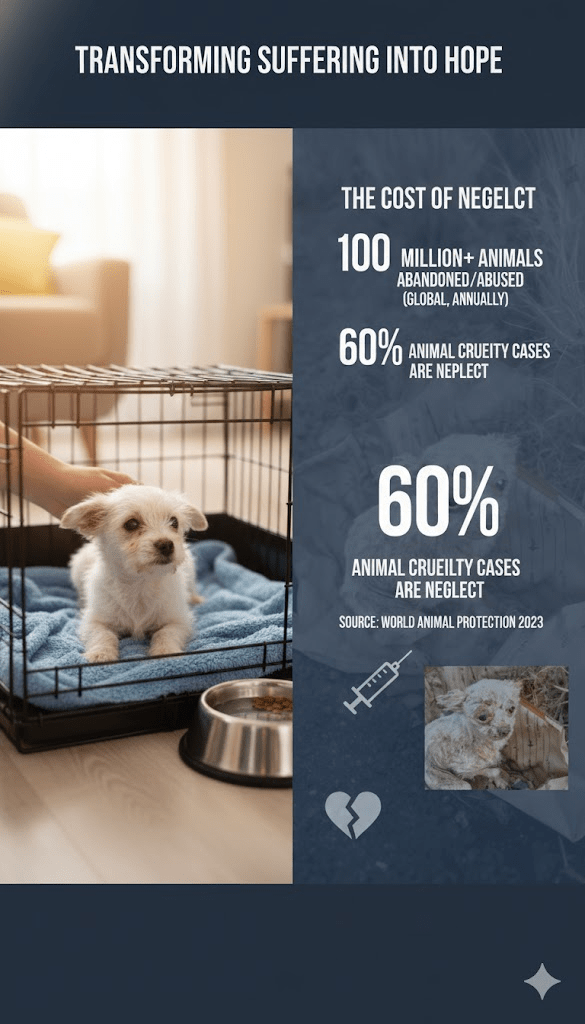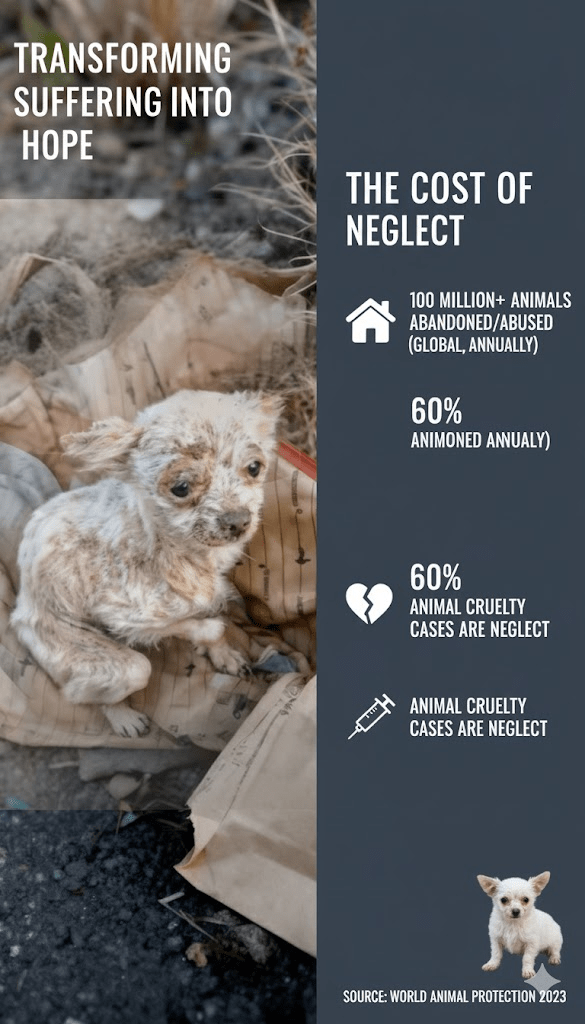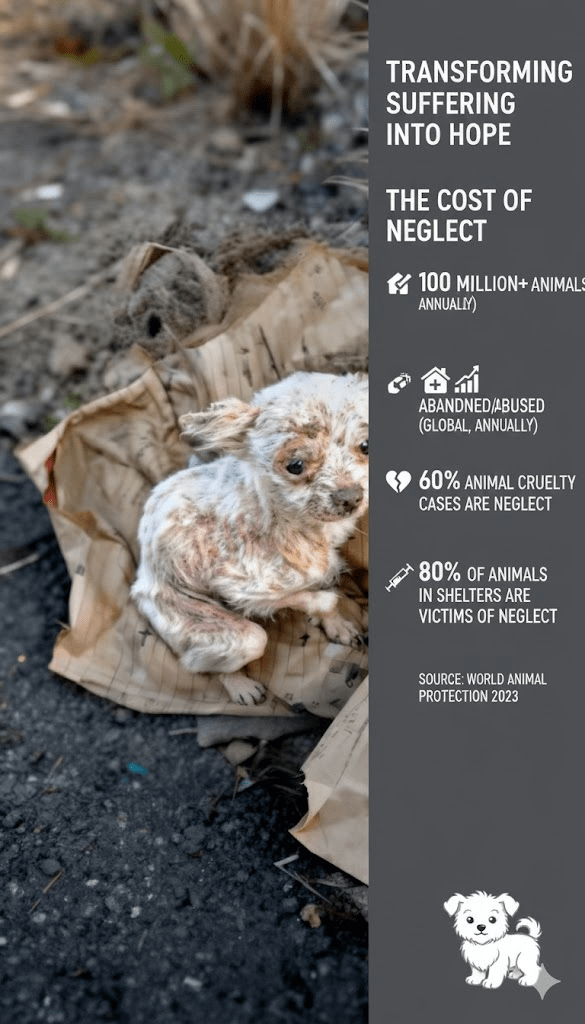The image before us is a poignant and heartbreaking testament to a pervasive issue that often goes unseen: animal neglect. It captures a tiny, vulnerable creature, its fur matted and sparse, its eyes wide with a mixture of fear and perhaps a flicker of hope, nestled precariously on what appears to be discarded paper. This single photograph, stark in its raw honesty, serves as a powerful microcosm of the immense suffering endured by countless animals globally due to human indifference, ignorance, or malice. It compels us to look beyond the surface, to delve into the complex layers of animal welfare, and to understand not just the immediate tragedy it depicts, but the systemic failures and societal responsibilities that allow such situations to persist. This isn’t merely a picture of an abandoned puppy; it is a profound call to action, urging us to recognize our moral obligation to protect and advocate for those who cannot speak for themselves, to dissect the root causes of neglect, and to explore effective strategies for prevention, intervention, and rehabilitation. The plight of this small being underscores a critical need for enhanced awareness, robust legislative frameworks, and a collective commitment to fostering a culture of empathy and responsible pet ownership, transforming potential despair into a future where every animal is treated with the dignity and care it deserves.

Animal neglect manifests in various forms, often falling under the broader umbrella of animal cruelty. It can range from inadequate provision of basic necessities—food, water, shelter, and veterinary care—to outright abandonment and intentional harm. In many cases, neglect is not malicious but rather a consequence of ignorance, financial hardship, or an owner’s inability to cope with the responsibilities of pet ownership. However, regardless of the underlying cause, the impact on the animal remains devastating. Malnutrition leads to stunted growth and weakened immune systems, lack of shelter exposes them to extreme weather, and untreated illnesses can lead to prolonged suffering and death. The emotional toll is equally profound, leaving animals traumatized, fearful, and often aggressive or withdrawn, making rehabilitation a challenging, albeit crucial, process.

Unfortunately, the scale of animal neglect is staggering. Millions of animals enter shelters worldwide each year, with a significant portion suffering from various stages of neglect. These numbers represent only the visible tip of the iceberg, as countless others endure hidden suffering, never reaching the safety of a rescue organization. The burden on animal welfare organizations is immense, straining their resources and their dedicated staff. They are often the first responders, providing critical medical care, nourishment, and rehabilitation to animals like the one in our image, working tirelessly to undo the damage inflicted by neglect and prepare them for a chance at a loving home.

To effectively combat animal neglect, a multi-faceted approach is required, encompassing prevention, intervention, and education. Prevention begins with responsible pet ownership, which includes thorough research before acquiring a pet, understanding the financial and time commitments involved, and providing consistent veterinary care, proper nutrition, and a safe environment. Spaying and neutering programs are also crucial in preventing overpopulation, which often leads to more animals vying for fewer resources and increasing the likelihood of neglect. Legislation plays a vital role in setting minimum standards of care for animals and providing legal avenues for prosecuting cases of neglect. Stronger laws and more rigorous enforcement can act as powerful deterrents, sending a clear message that animal neglect will not be tolerated.







